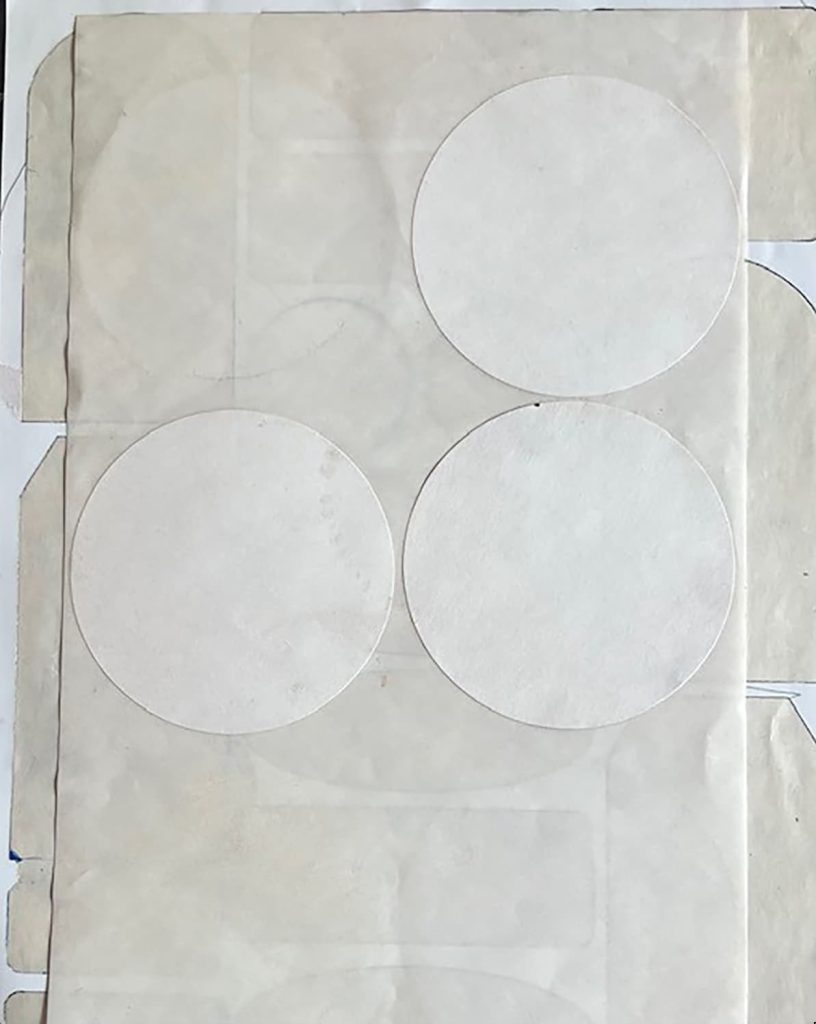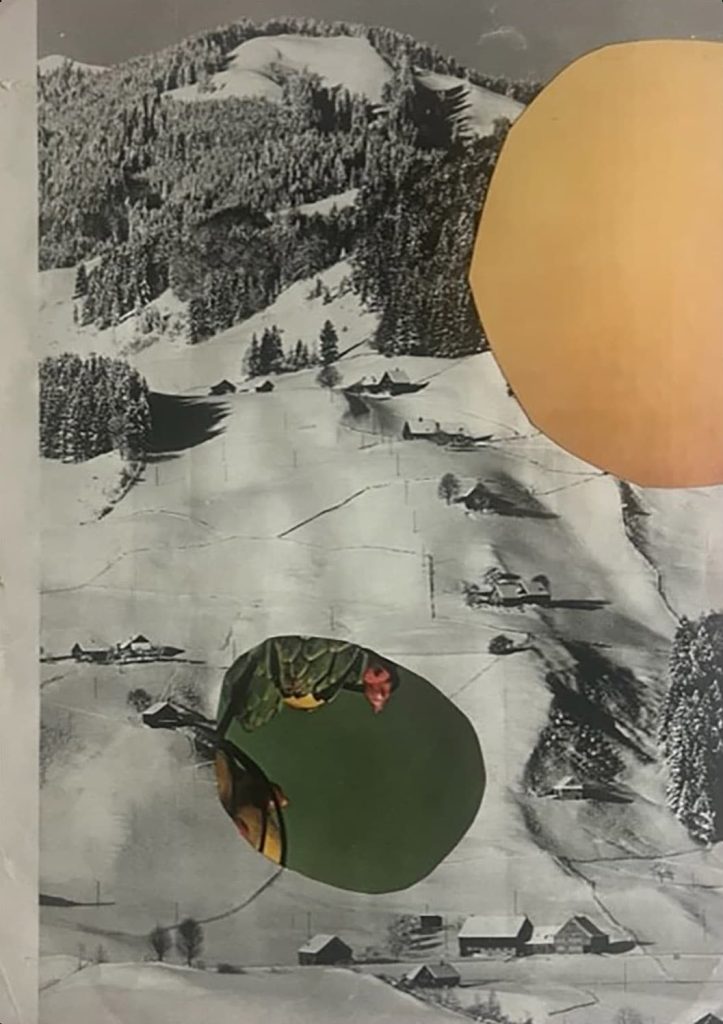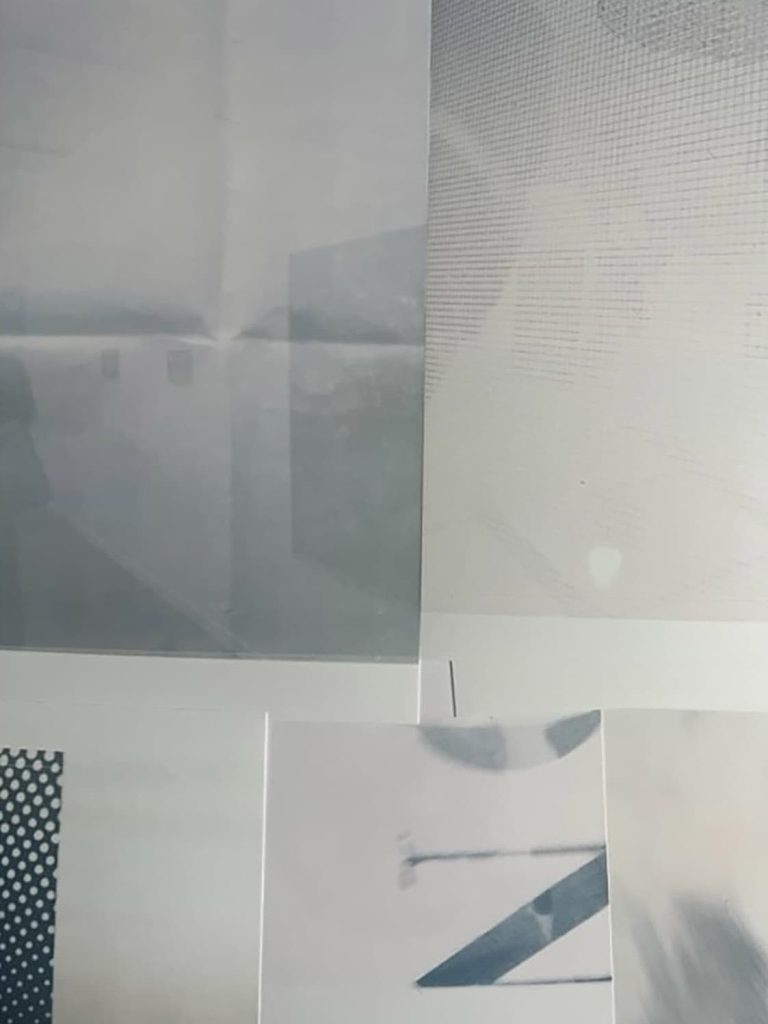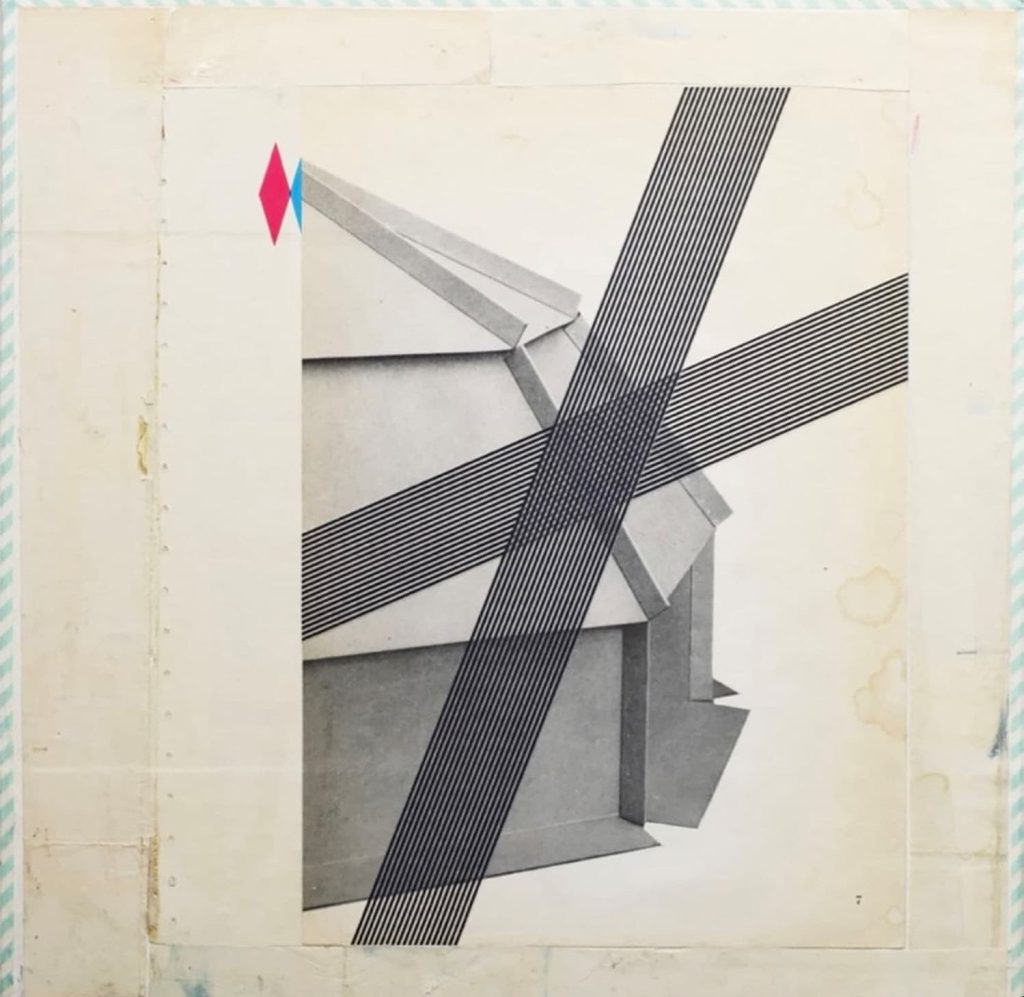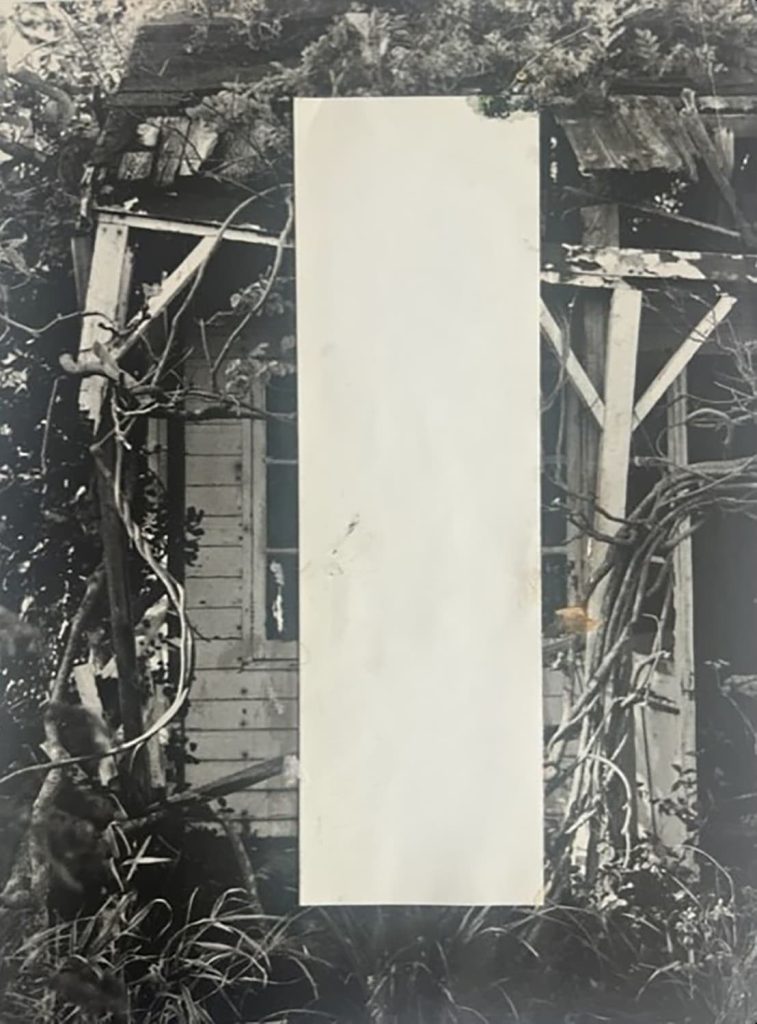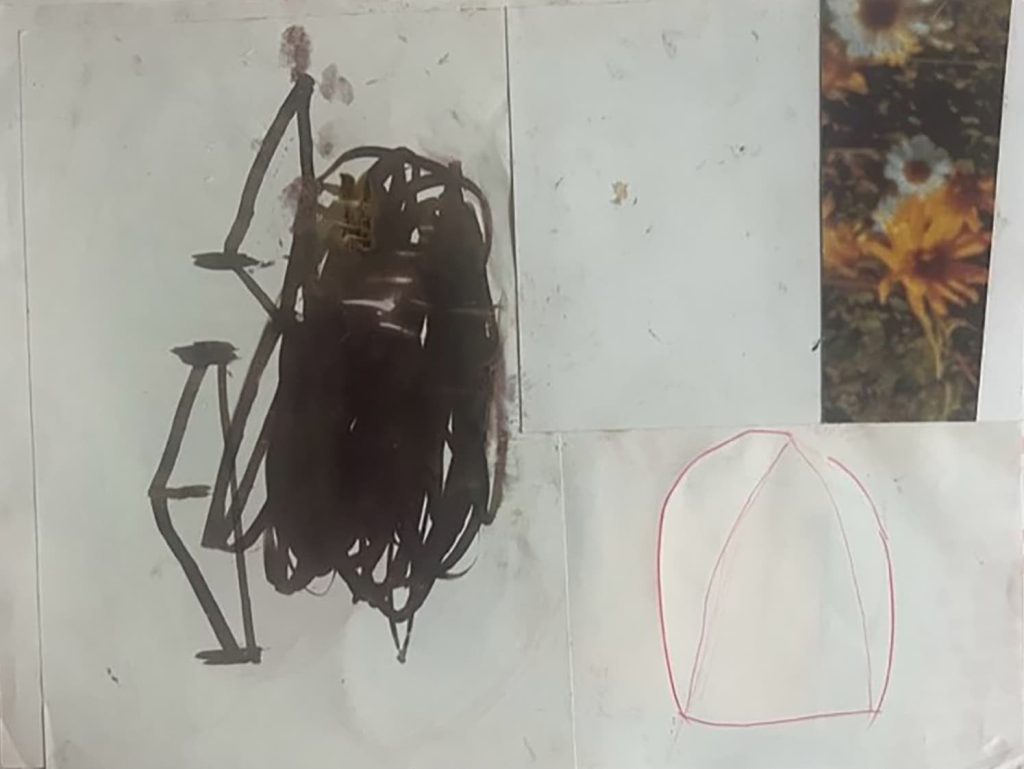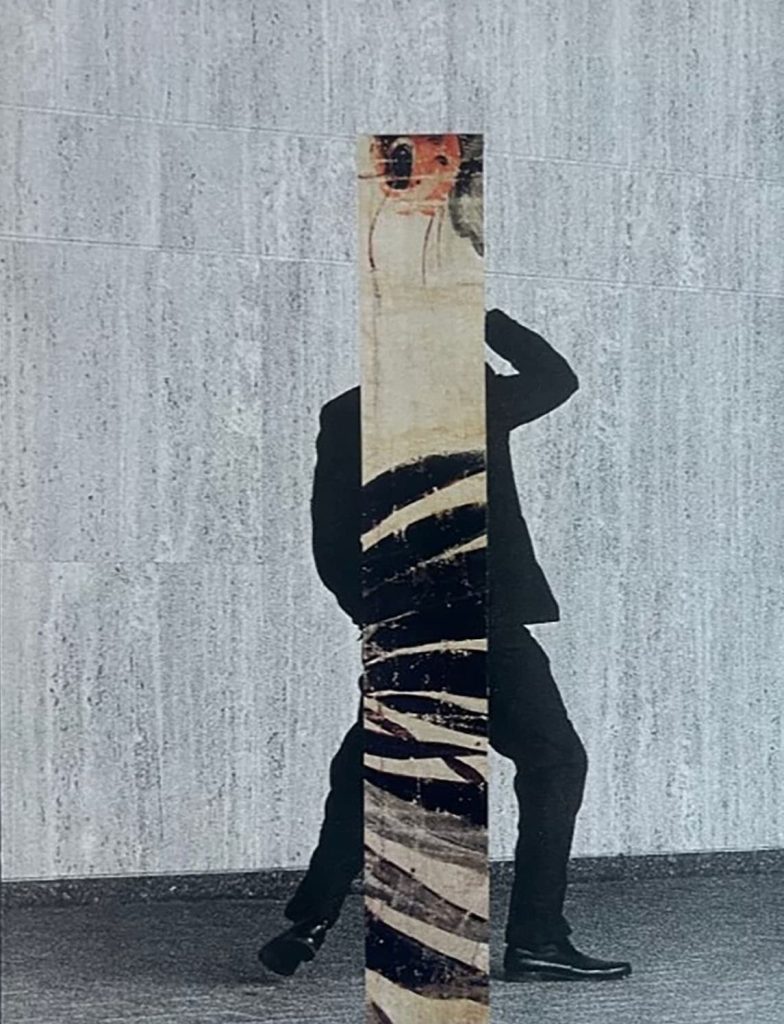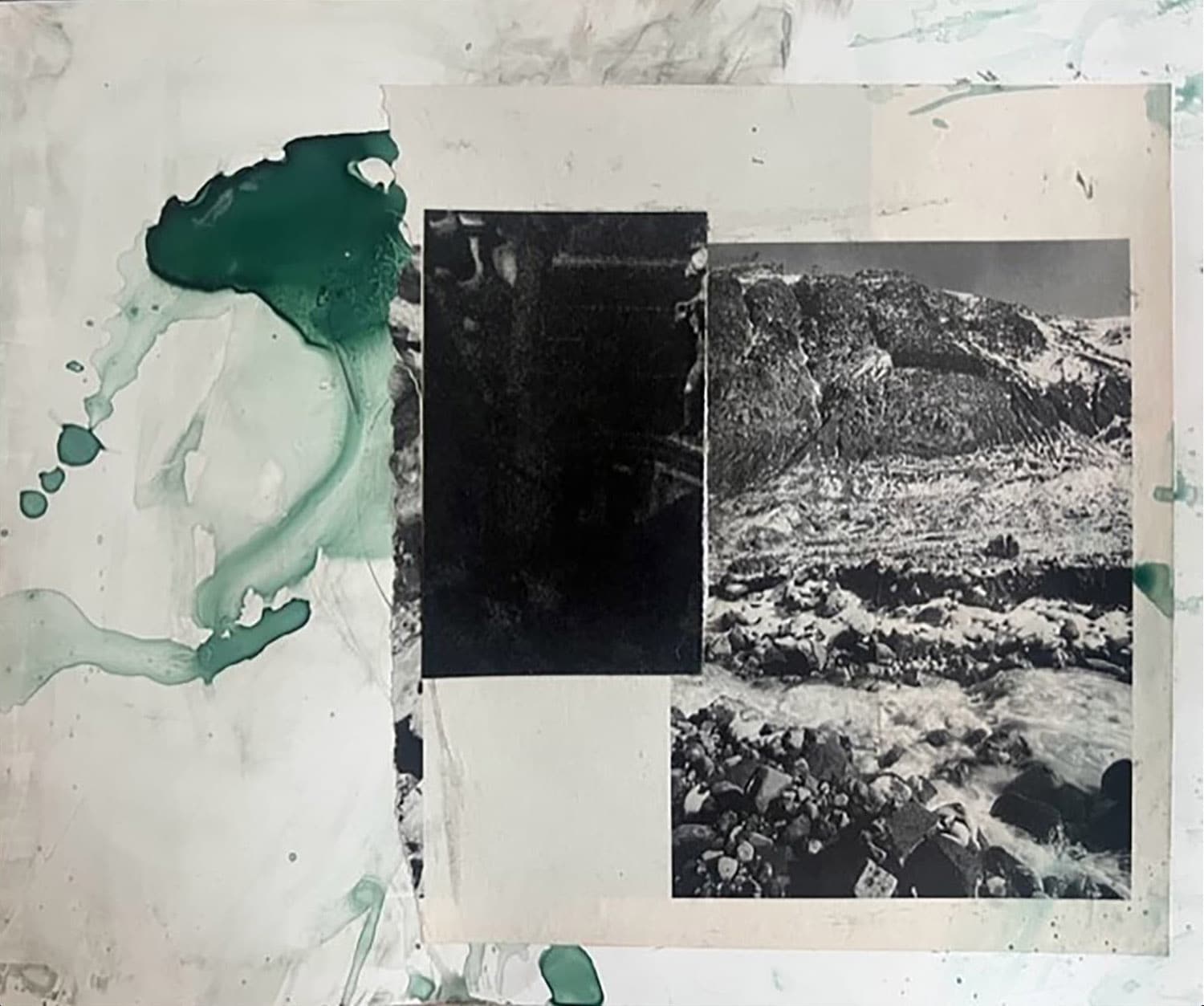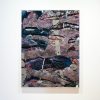Born: NY Hospital, NYC
Raised Pomona, NY / Rockland County
Based: Brooklyn, NY
Making art since: When I was little, my parents would give me boxes of fabric, paper, wood scraps and Elmer’s glue. So I guess I’ve been making collages since I was like 5.
Something you’d like our readers to know about you: There’s a lot here already!
What are the three tools/elements you can’t live without?
UHU Glue Stics, big & small
My MBM 1038 Guillotine Paper Trimmer
100s of old paper clips
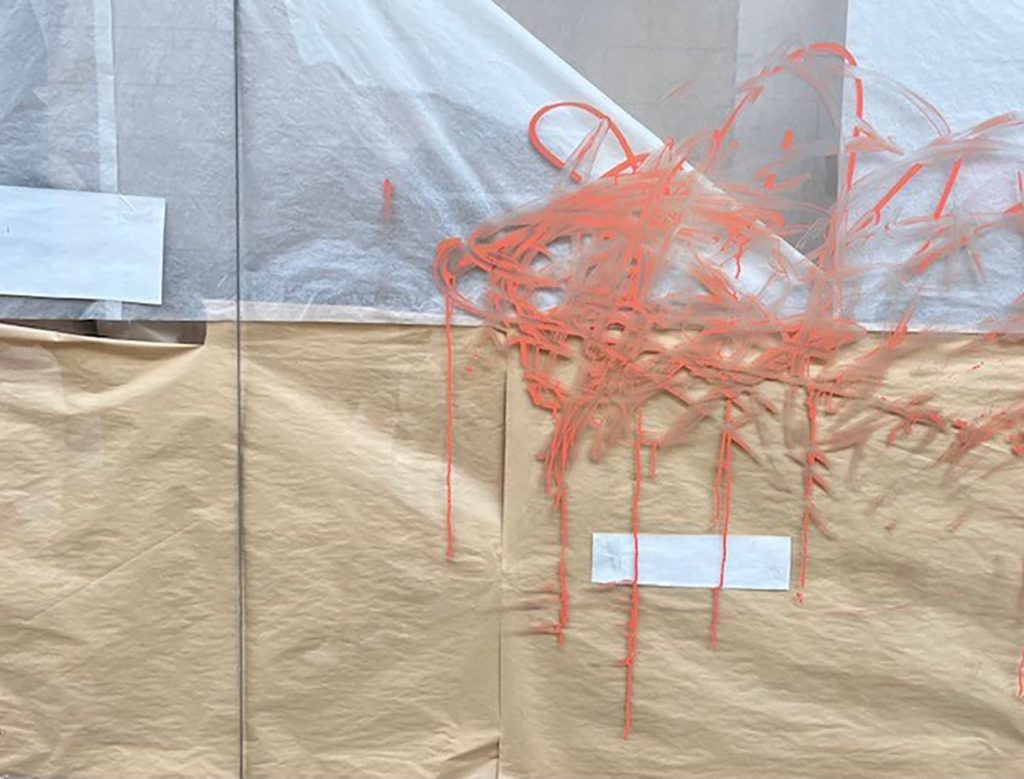
What do you think is the most important thing that defines your work as yours? I’m drawn to 1950s-80s industrial design, nature and science imagery as well as odd, hard-to-classify little moments that have their own thing going on. I take pictures of the unintended still life you find when you look into certain shop windows when the shop is closed, for example. I like a certain vulnerability and openness. I sometimes leave edges and corners unglued, I use the back of a collage if there’s something subtle and interesting going on and I try and embrace mess on the surface. Some designs are kept clipped instead of pasted in order to explore multiple juxtapositions. I order used paper clips in bulk and soak them in water. The rustiness adds another texture.
I’m a big scribbler. I like to draw with pens and markers that are running out of ink and broken-tipped pencils. There’s more tension when everything isn’t smooth and working properly. I’m pretty much a minimalist; less usually feels like enough.
Can you describe your work process? I listen to music (shout out to WFMU free-form radio) and have gotten through many writers reading their favorite short stories on The New Yorker Fiction podcast although I almost always lose track of the narrative so I like the part where they sum up in passionate depth every detail I have missed completely.
I usually draw or glue-down random scraps to warm up. The idea is to be unselfconscious and make something
I would never show anyone. Sometimes I end up liking these rushed pieces more than work I’m maybe trying too hard with. I started clipping these exercises onto an old ream of faded construction paper and now have a huge stack.
If I can’t tell if something is working, I take a picture. Seeing a phone shot gives me perspective. I’m constantly cropping. Sometimes details work but not the whole thing. I have a photo library full of details and in the digital universe, details can exist as a complete design. Overworking is the enemy. But again, parts of a piece can be salvaged and your perspective and materials are always changing so re-design is possible– a great thing about collage. My flat file is full of “good” or “almost good” work folders and of course folders for scrap that I won’t use anytime soon and things I’m focused on more immediately. Looking at art that inspires me is a great motivator.
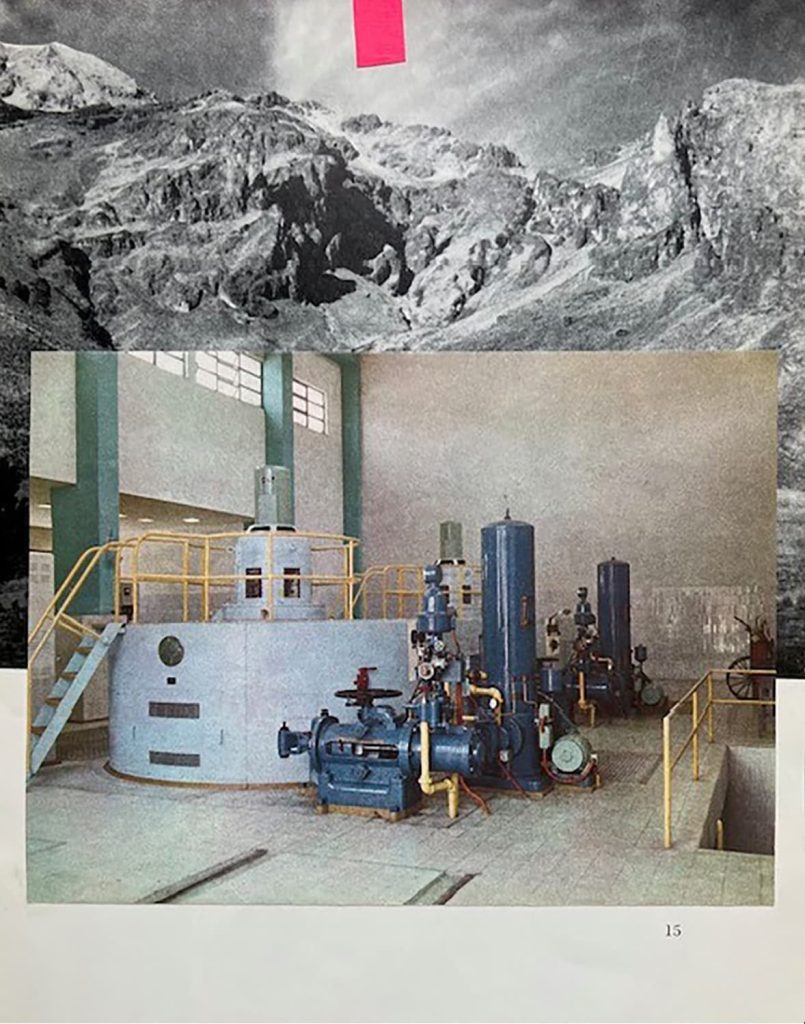
What artists would you recommend us check out? The Arte Povera movement formed some of my earliest inspiration as well as the classic video “The Way Things Go,” by Fischli & Weiss, work by Christian Boltanski, early Yayoi, David Hammonds, Diane Arbus, Bruce Conner, Felix Gonzalez Torres’ candy spills and Daniel Buren’s stripes had a huge effect on my early striped collages.
Zoe Leonard
Ghotam Ghosh
Eric N. Mack
Creative Growth (artists with disabilities)
Olaf Unverzart
Pipilotti Rist
Rosângela Rennó
Ryan Foerster
What is your personal definition of collage? The language of cutting and pasting; the moving around of images until they speak to each other is the thing that comes closest to how I see the world and my place in it. I love finding some discarded book or picture and re-inventing it, giving it new life, context, meaning. There’s an impression a good collage makes in the first seconds that’s like a little rush. That connected, yet fleeting quality is what I look for and work towards.
Learn more about Leslie Siegel on her website and Instagram
